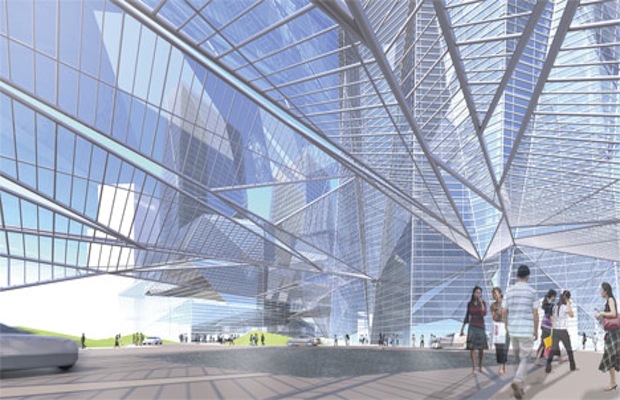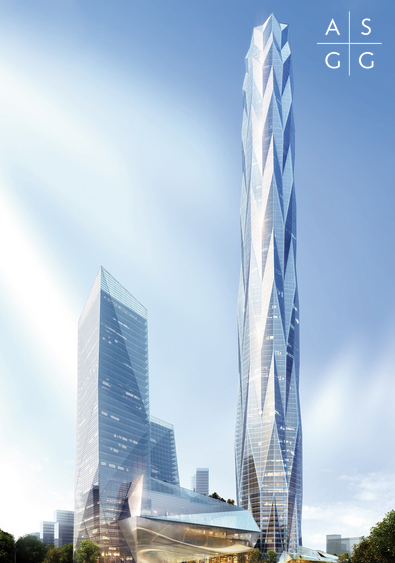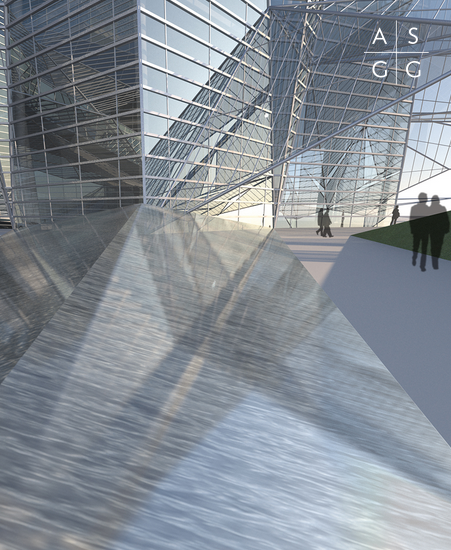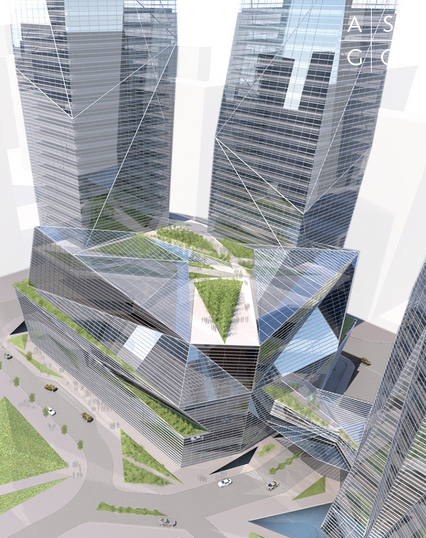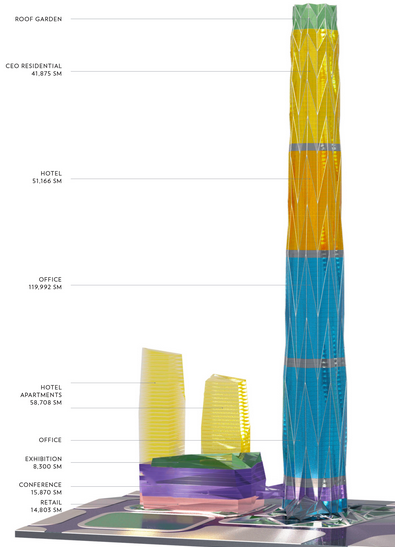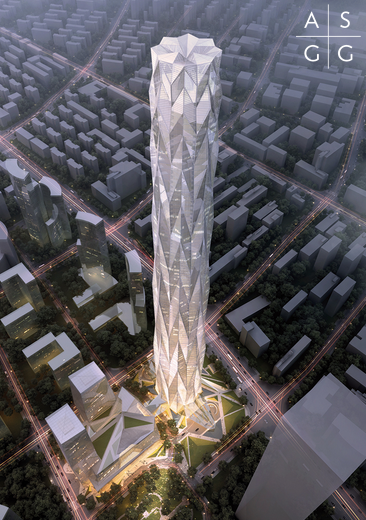Construction is under way on the Greenland Tower Chengdu, a 468-meter-high crystalline skyscraper in Chengdu, China, designed by Adrian Smith + Gordon Gill Architecture.
When built, it will be the tallest building in southwestern China, surpassing Chengdu's current tallest buildings by more than 200 meters.
The multi-faceted glass tower was inspired by “the unique ice mountain topography around Chengdu,” the firm said. Plans indicate that inset LED lighting on the edges of the faceted glass will give viewers the impression of a shimmering glacier. The tower will thereby act as a light sculpture for the city of Chengdu.
The project is set for completion in 2018. It is part of a larger complex comprised of the main tower, two smaller towers, and a six-story podium. Office, retail, and residential space will all be included in these buildings, according to Next Big Future.
"The architecture and structure marry perfectly," the firm said in a statement. "The design fully considers the structural requirements of supertall buildings in a high seismic zone, using a geometrical plan, a tapered form, and a high-performance damper bracing system to ensure the structure’s stability and efficiency."
Related Stories
| Aug 19, 2011
Enhanced acoustical design
Ambient noise levels in some facility types are trending up and becoming a barrier to clear communication between building occupants.
| Jul 22, 2011
The Right Platform for IPD
Workstations for successful integrated project delivery, a white paper by Dell and BD+C.
| Jul 22, 2011
High-performance windows and doors
Learning objectives After reading this article, you should be able to: Understand issues of thermal performance and energy efficiency in relation to window and door systems; describe optimal detailing of the window-wall interface and how it contributes to building performance, sustainability, and occupant well-being; understand how durability contributes to sustainable windows/doors; and list sustainable O&M requirements for window and door systems.
| Jul 21, 2011
Falling Architecture Billings Index reflects decrease in design demands
This months Architecture Billings Index (ABI), provided by the American Institute of Architects, is almost a full point lower than last month’s reported score. June’s reading of 47.2 was short of the required 50 to achieve billings increases, making July’s reading of 46.3 an unwelcome sign of market tidings.
| Jun 29, 2011
New leadership role for architects in net-zero design
BD+C Editorial Director Rob Cassidy talks with RNL Design's Tom Hootman, AIA, about the changing role of architects in net-zero designs.


